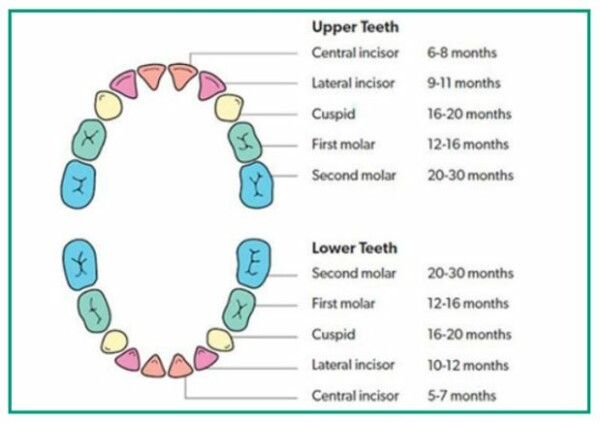One of the most exciting milestones for any parent is spotting that first tiny tooth peeking through your baby’s gums. But when exactly should you expect it, and what signs should you watch for to know it’s on the way? Here’s a helpful guide to understanding the teething timeline and how it may unfold for your little one.
The Expected Timeline for Teething
Teething usually begins between the ages of 4 and 9 months, with most babies cutting their first tooth around the 6-month mark. However, every baby is different, and there’s a wide range of what’s considered “normal.”
- Early Teethers: Some babies cut their first tooth as early as 3 months.
- Late Teethers: Others may not begin teething until 12 months or even later.
- Full Set of Baby Teeth: By their third birthday, most children will have a full set of 20 milk teeth (also known as primary teeth).
The process of teething doesn’t happen overnight. In fact, it’s not uncommon for it to last up to 18 months from the first tooth’s emergence to the final one coming in.
The First Tooth to Emerge
The first teeth you’ll likely see are the lower central incisors—those tiny front teeth on the bottom. These often appear around 6 months of age, though this can vary. These are typically followed by the top central incisors, then the lateral incisors (the teeth next to the central ones).
By the time your baby is about 1 year old, they may have 6-8 teeth.
Signs That a Tooth Is on the Way
Wondering how to know when your baby is teething? Here are some common signs to watch for:
1. Increased Drooling: Excess saliva is a hallmark of teething, so keep plenty of bibs handy!
2. Chewing on Everything: Babies may gnaw on toys, fingers, or anything they can get their hands on to soothe sore gums.
3. Irritability: Sore gums can make babies fussier than usual, especially at night.
4. Swollen or Red Gums: You may notice their gums looking puffy or red where the tooth is about to break through.
5. Disturbed Sleep Patterns: Teething discomfort can disrupt your baby’s sleep routine.
6. Refusal to Eat: Some babies may lose interest in food due to gum pain.
While these signs are common, every baby experiences teething differently. Some breeze through it with barely a fuss, while others may need extra comfort and care.
Tips for Soothing a Teething Baby
- Offer a cool teething ring to help relieve gum pain.
- Use a clean, damp cloth to gently massage their gums.
- Let them chew on a chilled spoon or soft teether (but avoid freezing items).
- Homeopathic remedies like Teetha granules or gel can provide gentle relief for sore gums.
When to Speak to a Doctor
If your baby hasn’t started teething by 15 months, it’s a good idea to consult your GP / Health Nurse. While late teething is often just a normal variation, it’s worth checking to rule out any underlying issues.
Teething is an exciting yet sometimes challenging time for both babies and parents. Remember, the timing of those first teeth varies widely from child to child. Whether your baby’s teeth come in early, late, or right on schedule, they’ll eventually have their full set of milk teeth ready to dazzle the world by their third birthday.
Brought to you by















